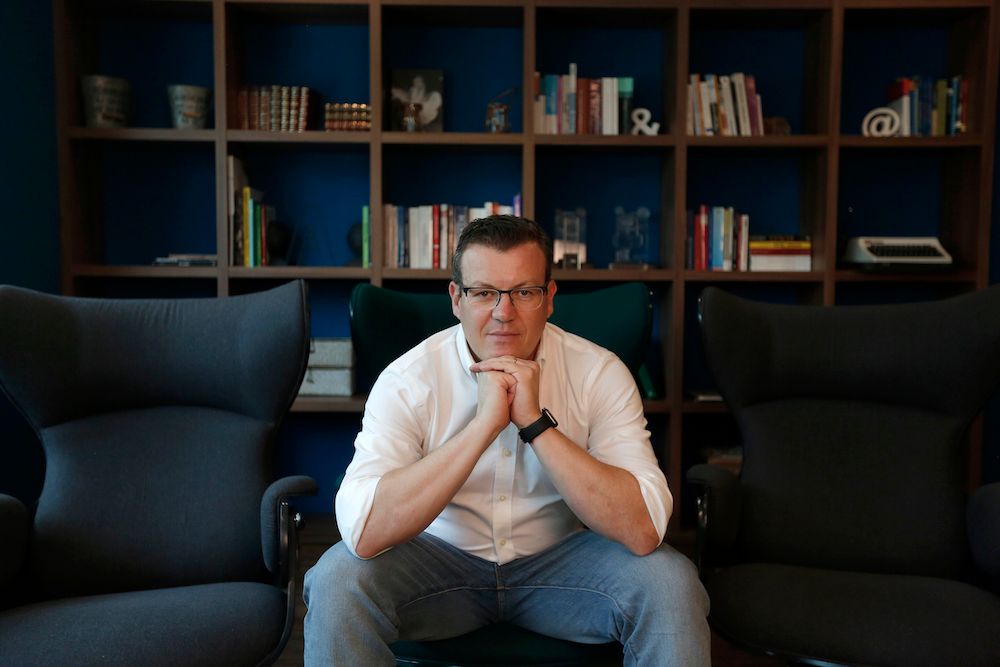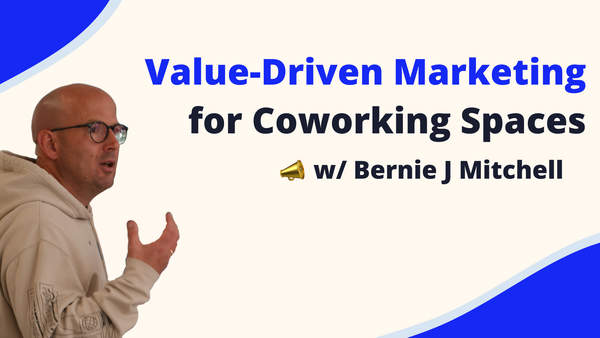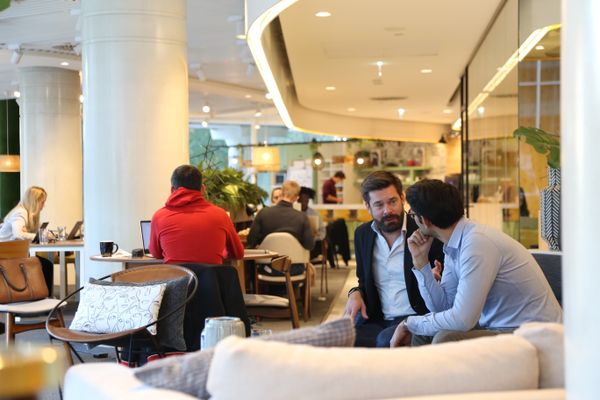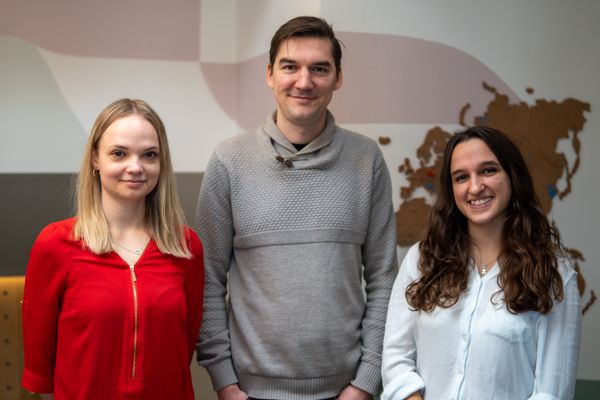Puedes leer este artículo en español aquí.
You are likely to find Carlos Gonçalves, founder of Avila Spaces, running from one place to another. However, once you sit down with him, that energy shifts focus in an instant, and the conversation flows naturally.
I met Carlos at their new headquarters in the Atrium Saldanha Building, a flexible workspace located in a shopping center. Though this concept is not new (we have seen it before in places like America and Ireland) the Avila headquarters in the Atrium building is the first of its kind in Portugal.
“We call it Avila Work City because you can do everything without leaving the mall; You have a supermarket, restaurants, electronics stores, and maybe one day we will have a daycare or a gym. I was inspired by a concept I saw ten years ago in Boca Raton [Florida, USA], then during the strange months brought about by COVID, we saw the opportunity to make it possible here.”
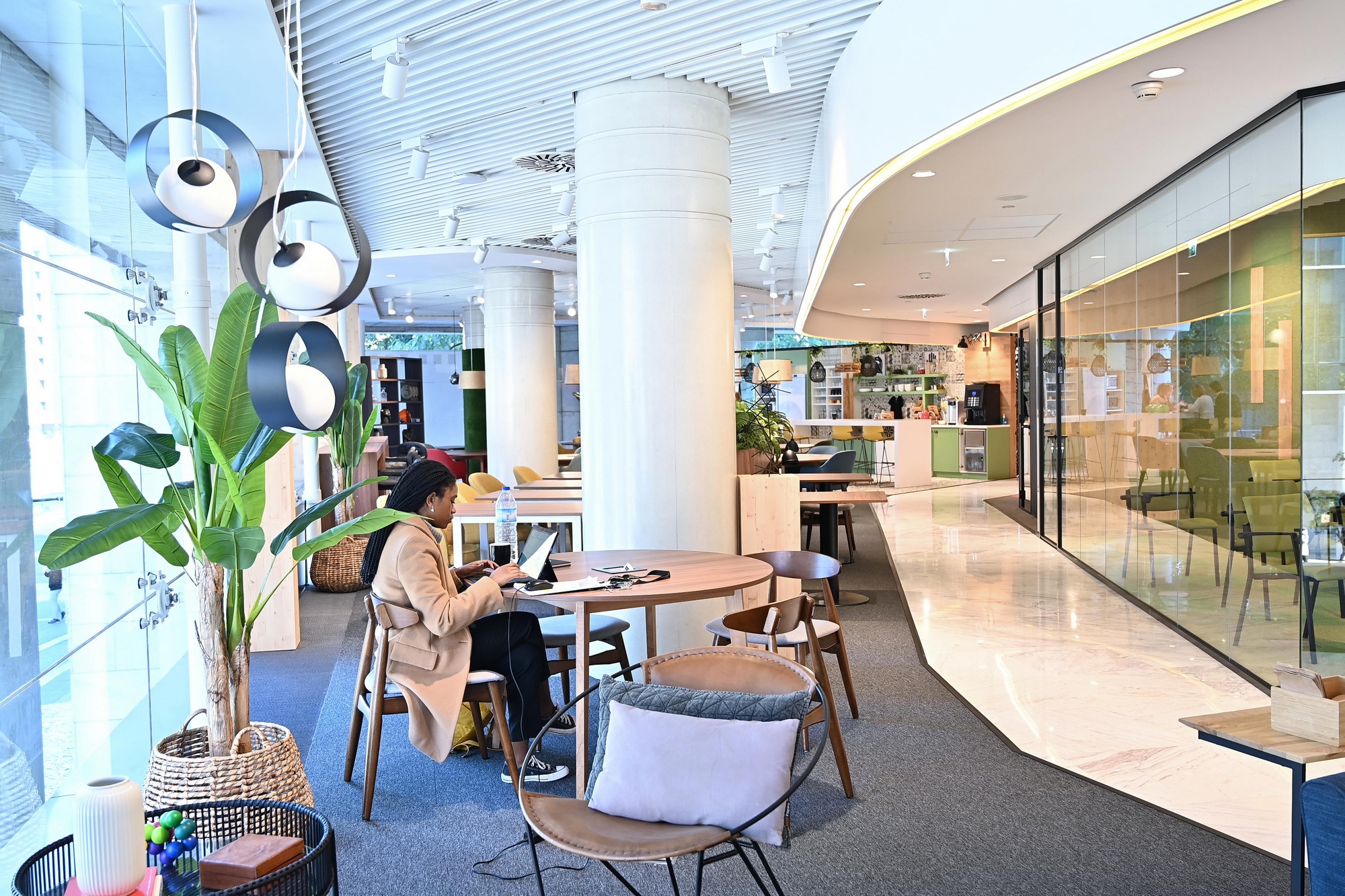
Now let's take a trip back through time: Who is Carlos Gonçalves and how did he end up in Flexwork?
“I am an entrepreneur. Before starting my company, I worked in health management in a hospital, but I was sure at that time that I would have my own company someday. In 2004, my wife and I spotted an opportunity in the market: Business centers looked outdated and cold. We decided to create a new concept of a business center that combined ergonomics and comfort in an attractive, pleasant, and modern space.”
In 2007 Carlos met Pier Pablo Mucceli, founder of eOffice and another flexible workspace pioneer. As a result of that conversation, they started a pilot project in which they turned a meeting room of about 30 sqm into an open space with work positions:
“It was a concept that did not exist yet and we thought it was worth trying. At that time, when we created the service, the market was not ready for it in Lisbon. People were afraid that others would look at their screens or papers. Today, more than ten years later, that seems absurd. Just one year later we stopped offering that service.”
Cut to five years later, they re-launched the service in a more mature market alongside a virtual office service and administrative support (virtual secretary).
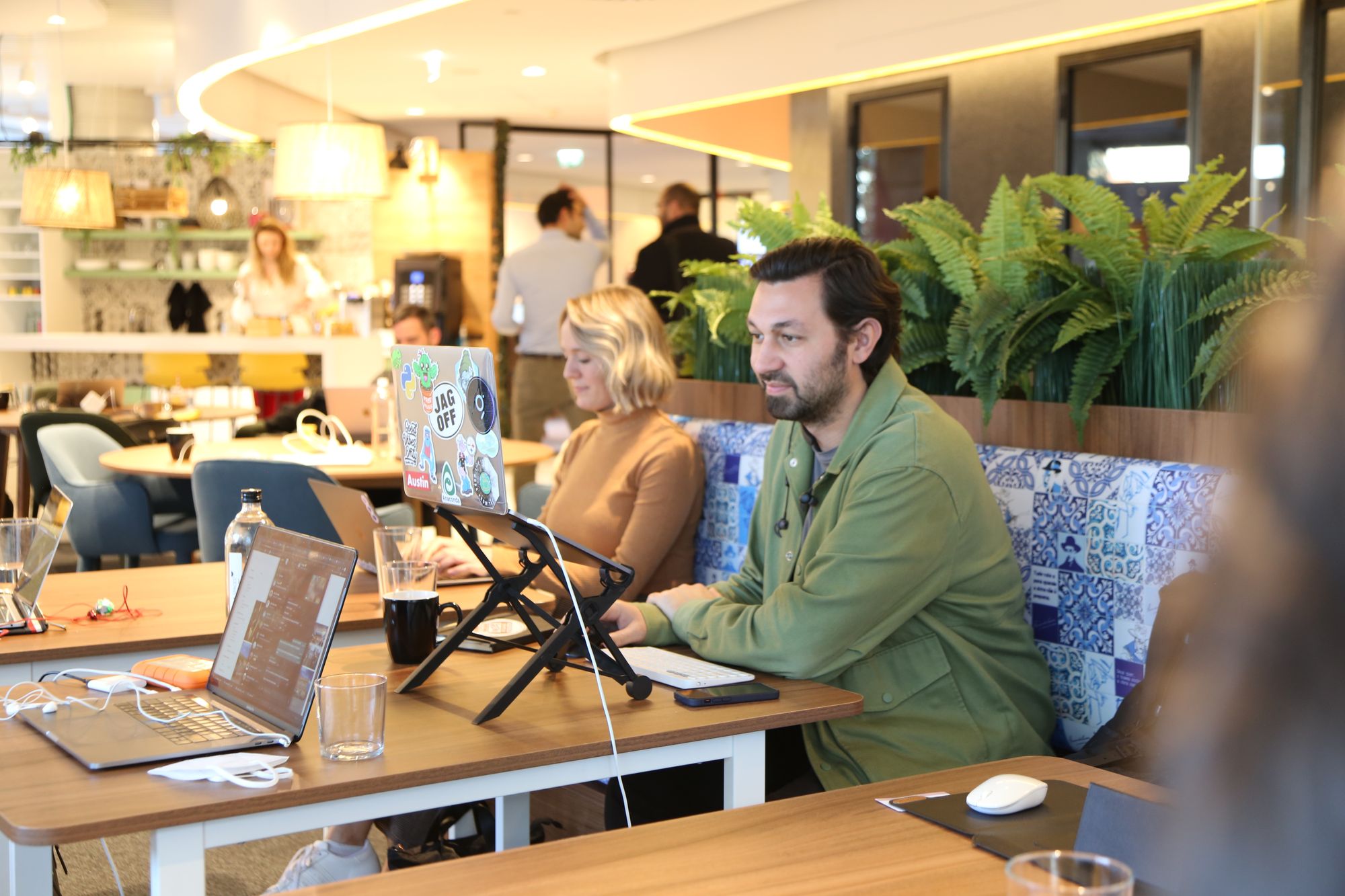
One of the most important aspects of Avila Spaces is their long history of changing locations. Since changing locations is such a critical decision that must be undertaken with caution, I asked Carlos about his thought process.
“When we opened the first location, we had no idea what we had to look for.”
At that time, the industry was immature and there was no reliable source of information available, but Carlos was able to chart a course for himself:
“There are basic things that should always be checked, such as the electrical installation, which ultimately affect whether the building can even support clients. We realized that if we wanted to provide a quality service, we needed to have a building in good condition.”
Carlos continued to talk about the importance of comfort, air conditioning, and sound insulation in meeting rooms or offices—I couldn’t agree more. At this point, they decided to move into a “modern building.”
Let's pause here. In summary, when they realized that the space they occupied could not offer the quality of service able to support their members, they decided it was time to relocate.
“If you want to offer a good service, you have to be in an office building. And offering a good service is key to making profits.”
This statement (which for many coworking pioneers might be controversial) resonates strongly with me. The reality, whether we like it or not, is that an office building is designed to comply with regulations. When operators opt for romantic decisions and adapt buildings originally designed for other uses, they must be aware that they’ll need to increase their capital expenditure.
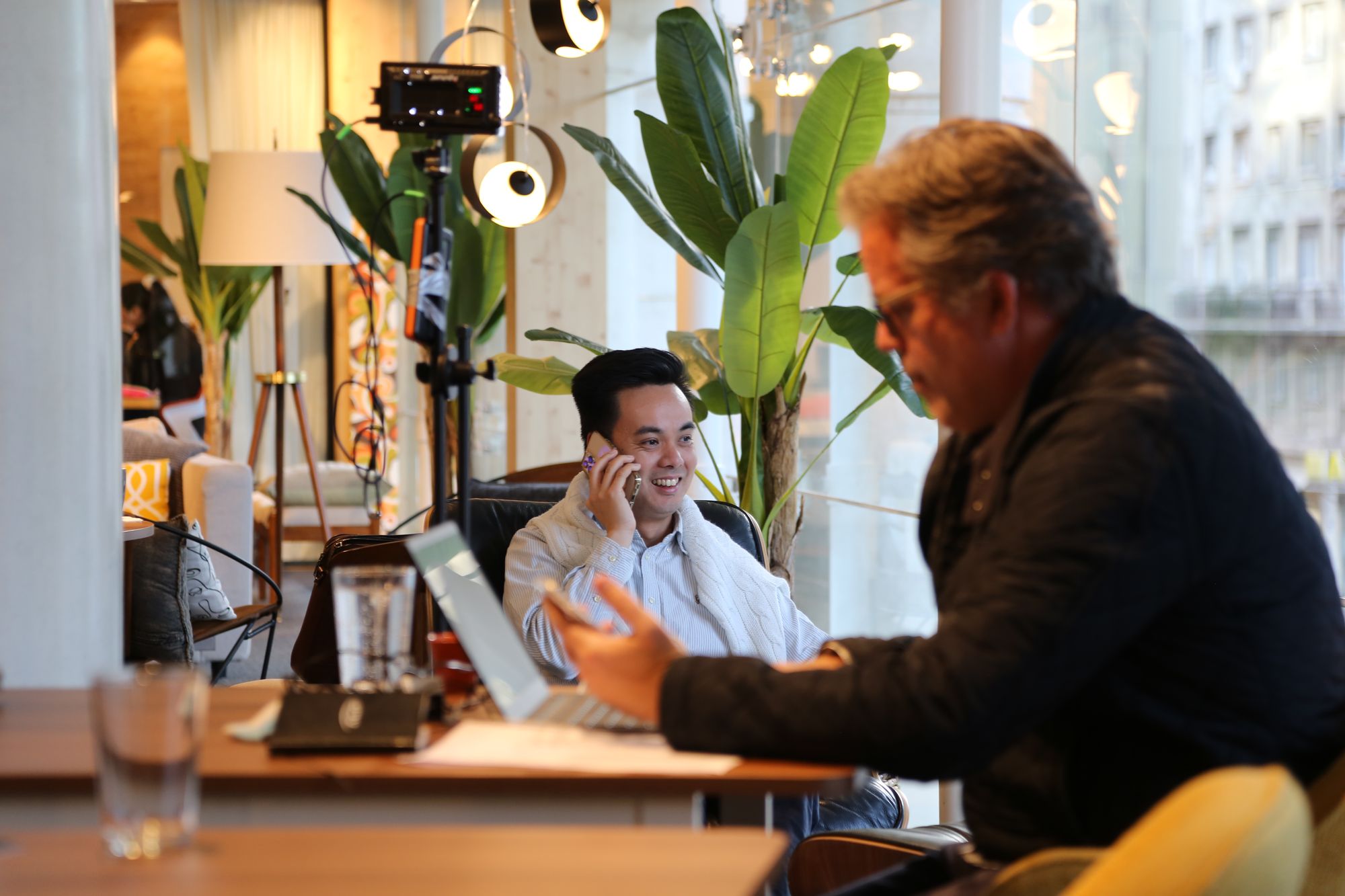
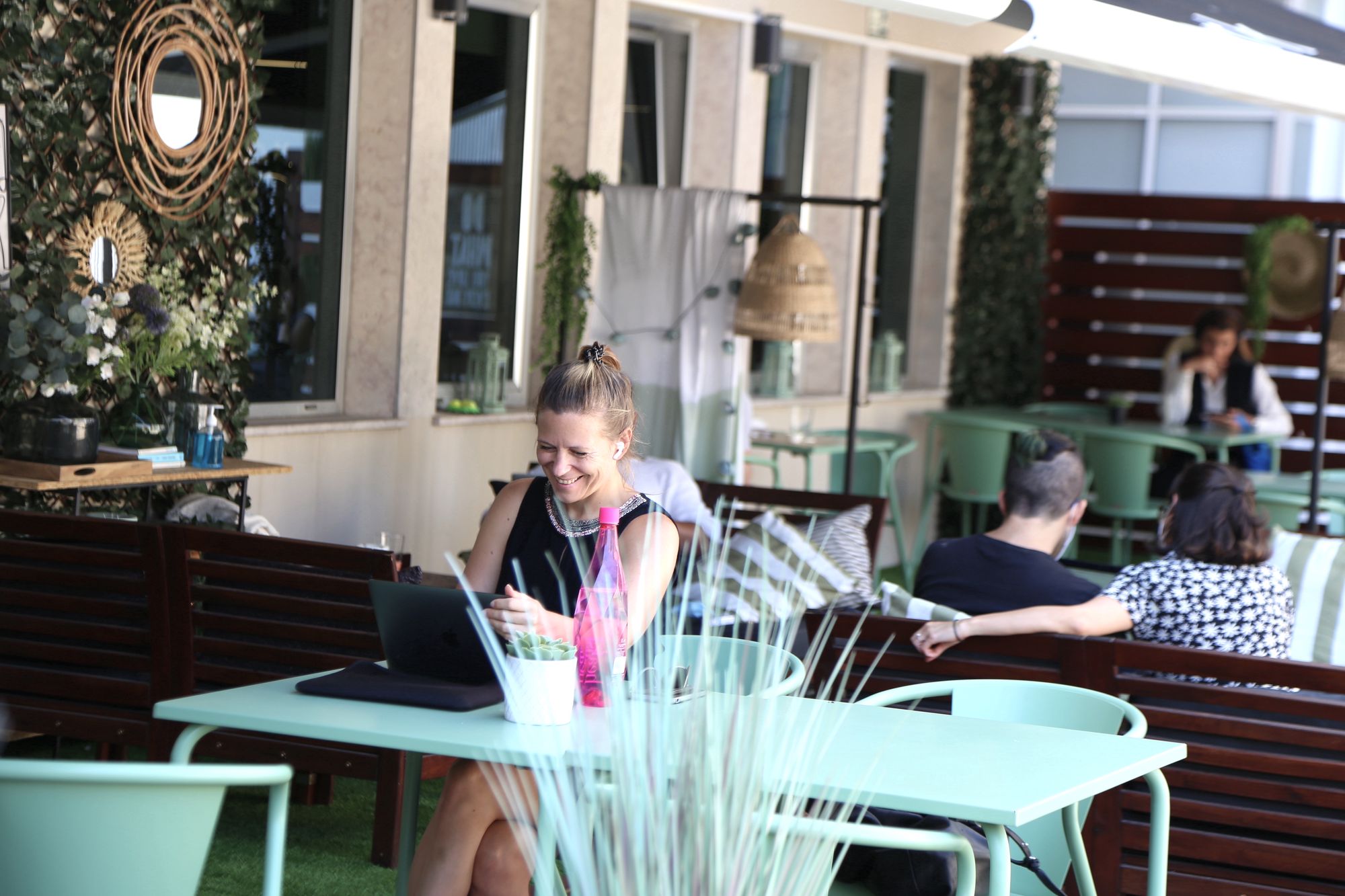
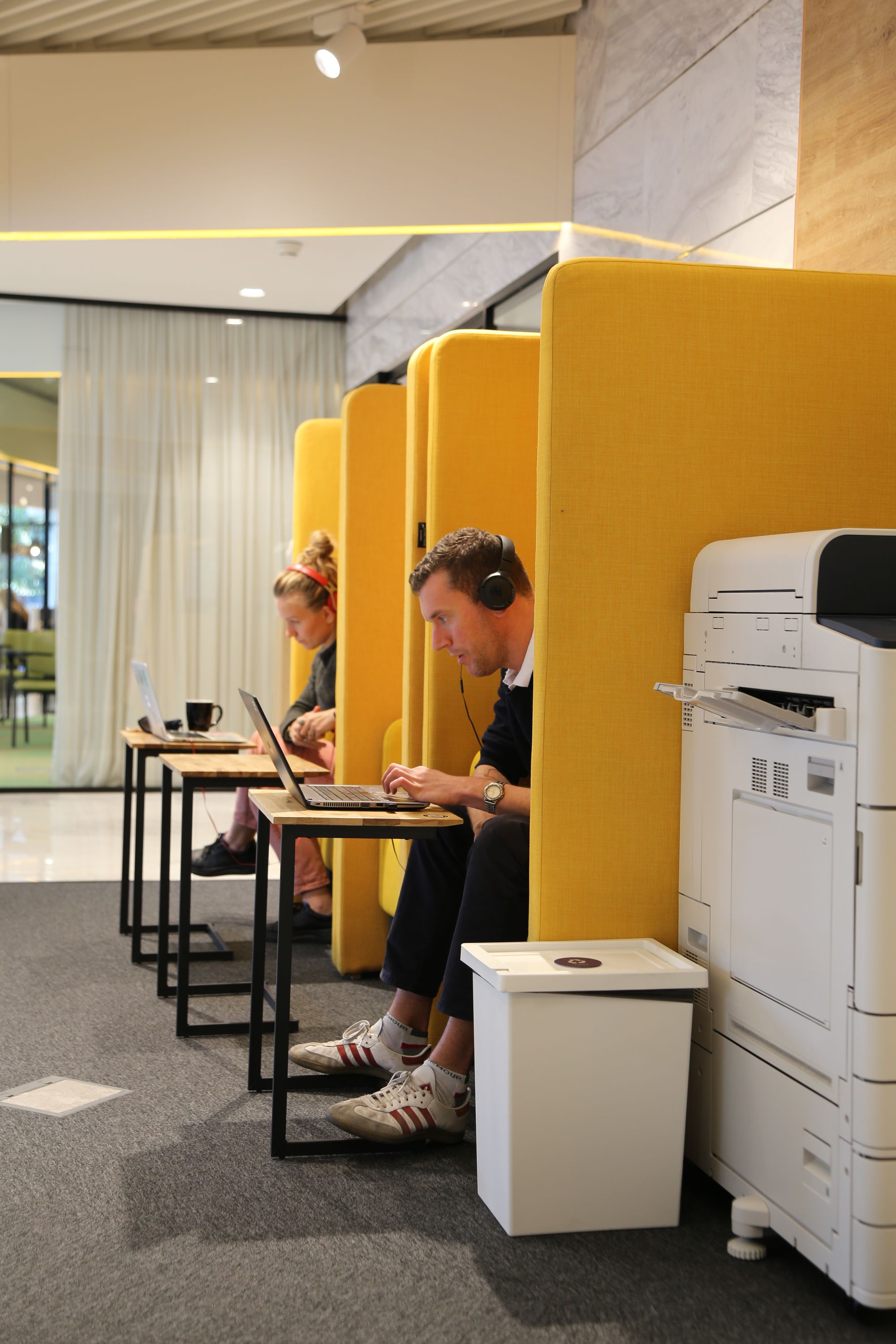
Does this mean you shouldn’t move into a space that wasn’t originally designed for office work? Not if you are making a motivated decision that your finances will support and will provide a higher ROI. That could mean being able to sell memberships at a higher rate or because it will contribute to increasing the perceived value of your brand (I am reminded of the fantastic work of Cloudworks in my hometown with Casa Les Punxes). However, if you choose the “romantic” option without considering everything that it entails, you end up spending money on infrastructure that members may not fully appreciate, unlike in a building designed to be an office in which those costs are baked in.
This is especially true in a building that you don’t own, and therefore, that investment goes straight to the landlord.
In 2010, while Portugal was still immersed in an economic crisis, Carlos decided to create another space at a prestigious address. They saw an opportunity to improve the service and created the My Office app in 2011, which, they tell us, was the first in the world to allow users to check if they had received calls, mail, or faxes, and allowed them to reserve rooms.
In this new location, the dimensions were not as important as the address: The primary goal was to enhance the virtual office service by adding a prestigious address where that type of service would naturally concentrate. But that was just the first part of the equation. Carlos also created an app to offer the best virtual office service possible. They obtained approximately 600 clients based on the strength of this combination.
The article will continue next week so stay tuned for part two.
If you aren’t already using Cobot as your coworking management software, give it a go! You’ll find that our features can help you run your coworking space more effectively and grow your community. Just sign up for a free trial or a live demo session. And if you have questions, our support team is all ears!
Happy Coworking!
